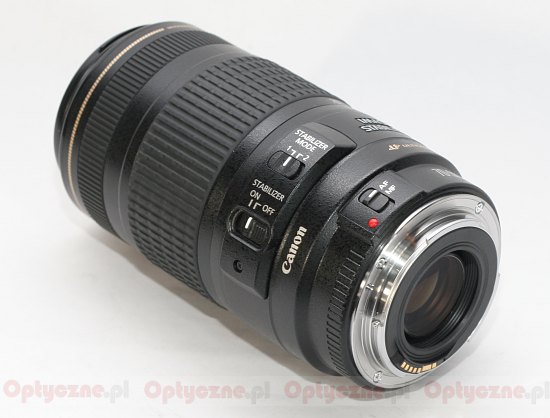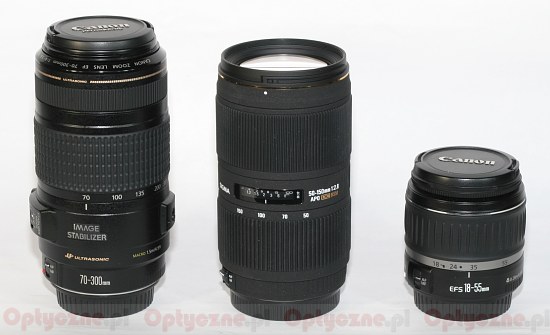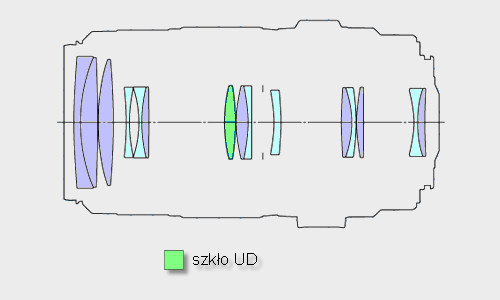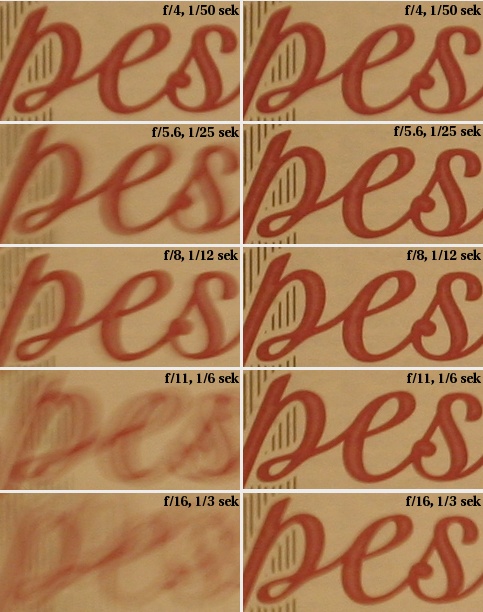Canon EF 70-300 mm f/4-5.6 IS USM
3. Build quality and stabilization
As far as the quality of the materials is concerned, it is in the medium price range standard of Canon EFs, like 1.4/50. It is better than all plastic 1.8/50 II but worse than die-cast magnesium alloy L- grade lenses.


Please Support UsIf you enjoy our reviews and articles, and you want us to continue our work please, support our website by donating through PayPal. The funds are going to be used for paying our editorial team, renting servers, and equipping our testing studio; only that way we will be able to continue providing you interesting content for free. |
- - - - - - - - - - - - - - - - - - - - - - - - - - - - - - - - - - - - - - - - - - - - - - - -
Something that draws your attention is the large zooming ring, which is well built in and therefore easy and smooth to operate. The manual focus adjustment ring is much smaller, although because of the overall large size, it is big enough. Its operation is not so perfect however, as some looseness and jumps can be noticed. At this point we came across two serious testing obstacles. The first and smaller one is the lack of scale on the body and the second and more serious problem is the forward moving and not very stable body-tube(it moves slightly sideways, which definitely will influence off-axis distortion), which also rotates while adjusting sharpness. Together with the lens barrel, the 58 mm filters thread also rotates, which is not good news for any owner of the polarize filter.
As far as the internal build is concerned, there aren't any big differences from its predecessor, the Canon 75-300 IS USM. The number of elements (15), and the groups (10), as well as its combination are the same. A very important difference is the UD low dispersion glass that was used in one lens in the middle part of the lens. This is supposed to give lower chromatic aberration and pictures with better resolution and higher contrast.

The new lens is a bit thinner and longer from its predecessor and is 20 grams lighter.
This new model is also equipped with a more efficient picture stabilization mechanism. The previous model allowed to work in 2 EV light conditions worse then in nonstabilization lens case. The tested Canon lens allow to work in light conditions even 3 EV worse. This means that we are able to use as much as eight times longer exposition times than in a regular lens. In other words, if we forget to freeze the movement, the camera working with Canon 70-300 mm at the 70 mm focal length and f/4 diaphragm is able to use a time which still allows to make a steady picture like with 1.4/70 mm lens.
This is what the manufacturer claims. How does it really look? To check, we have taken several pictures in average light with a 70 mm focal length and while changing the diaphragm value from f/4 to f/16. We took separate pictures with and without stabilization. In order to take a steady picture for a 70 mm, the time has to set to about 1/100 second. If the camera is very firmly held, one can try to work with 1/70 second or 1/50 second time. This was the one we started our stabilization potential test with. As you can see from the left panel pictures, when the stabilization is off, for 1/50 second time the picture is mediocre. Longer times are unacceptable. When looking at the right panel, with the stabilization on, one can see good results for 1/6 second and even with the exposition time of 1/3 second the picture taken is acceptable. The stabilization in this tested Canon works even better than claimed by the manufacturer and in many cases allows the use of exposition 10 times longer than in a regular lens.

However the efficient and well working stabilization has one flaw. It is significantly loud. During its operation a clear "growling" can be heard which is louder than in other, tested before lenses (for example 28-135 or 17-55 mm).
It is also worth adding that the Canon stabilization can work in two
modes. Mode 1 is stabilizing the picture vertically and horizontally
and is used to photograph the static objects. Mode 2 switches off the
gyroscopes for horizontal stabilization and is used to photograph
moving objects.






